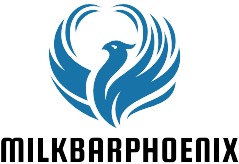Table of Contents
ToggleFlying can feel like a dry desert, where hydration goes to die. With recycled air and altitude changes, it’s no wonder travelers often land feeling like a raisin. But fear not, because staying hydrated in flight isn’t just a good idea; it’s essential for a smooth journey.
Importance Of Staying Hydrated
Staying hydrated during flights significantly impacts overall well-being. The dry, recycled air and altitude changes contribute to increased fluid loss.
Effects Of Dehydration
Dehydration can lead to discomfort during flights. Symptoms such as headaches, fatigue, and dizziness frequently arise. A lack of hydration may also affect cognitive function, leading to decreased concentration. Blood circulation could become impaired, provoking one to feel sluggish or more tired than usual. Individuals may experience dry skin and lips, which adds to discomfort. Recognizing these effects emphasizes the need for proactive hydration management.
Benefits Of Staying Hydrated
Maintaining proper hydration enhances comfort while flying. Hydration helps regulate body temperature, which can stabilize mood and energy levels. Adequate fluid intake supports better circulation, enabling the body to function optimally. Staying hydrated also aids in digestion, minimizing issues like bloating. Improved skin health results from adequate hydration, lending a radiant appearance. When individuals prioritize hydration during flights, it leads to a more pleasant travel experience.
Tips To Stay Hydrated In Flight
Staying hydrated during flights enhances comfort and overall well-being. Implementing effective strategies can make a significant difference.
Pre-Flight Preparations
Hydration habits should begin before boarding a flight. Drink at least 16 ounces of water in the hours leading up to departure. Limit caffeine and alcohol intake as both can lead to increased dehydration. Packing a refillable water bottle facilitates access to hydration once passing security. Eating hydrating foods like fruits and vegetables can also contribute to overall fluid intake. Verify the weather at the departure location; adjustments might be necessary if it’s especially dry.
Onboard Practices
Carry a personal water bottle onto the plane for convenience. Request water frequently from flight attendants, aiming for every hour during the flight. Opt for clear liquids, as they help boost hydration levels more effectively. Avoid salty snacks, as they can exacerbate dehydration. Keep lips moisturized with balm to prevent dryness. Engage in gentle movements during the flight to promote circulation, which aids in nutrient absorption. Drinking warm herbal tea can also offer comfort while contributing to hydration.
Hydration Sources During Flight
Staying hydrated during a flight requires intentional choices about beverage and snack options. Many sources offer suitable hydration.
Water And Other Beverages
Water stands as the best choice for hydration. Passengers can request water frequently from flight attendants. Herbal teas also provide a soothing option that adds to fluid intake. Many airlines now offer flavored waters, enhancing the appeal of hydration. Sports drinks, while not recommended for regular consumption, can help replenish electrolytes after long flights. Juices and coconut water serve as alternatives but may contain added sugars, so moderation is key. Choosing clear liquids over sugary or caffeinated alternatives ensures better hydration levels during the flight.
Hydrating Snacks
Some snacks contain high water content, providing hydration benefits. Fresh fruits such as watermelon, strawberries, and oranges top the list, offering refreshing flavors. Vegetables like cucumbers and bell peppers also contribute to hydration while being low in calories. Yogurt serves as another good option, delivering both hydration and probiotics for gut health. Avoiding salty snacks reduces the risk of dehydration, as sodium can increase thirst. Nut mixes, while energy-dense, can lead to thirst, so pairing them with hydrating options balances snacks effectively. Prioritizing hydrating snacks boosts overall comfort and well-being during travel.
Common Myths About Hydration
Understanding hydration during flights involves debunking some common myths. Awareness of these misconceptions helps travelers make informed choices.
Misconceptions About Airplane Cabin Pressure
Cabin pressure doesn’t drastically affect hydration levels. Many believe that higher altitudes lead to greater dehydration, neglecting that cabin pressure maintains a level similar to 6,000 to 8,000 feet. This altitude can still cause mild dehydration, especially with low humidity levels. Travelers often don’t realize that the air within the cabin only aggravates existing dehydration symptoms. Recognizing the impact of dry air on hydration promotes proactive management.
The Truth About Alcohol And Caffeine
Alcohol and caffeine often contribute to dehydration, but their effects vary. Many think that consuming these beverages during flights leads directly to dehydration; however, moderation is key. A small amount of either can be acceptable when paired with plenty of water. Relying solely on caffeinated or alcoholic drinks increases dehydration risks, especially in a dry cabin environment. Balancing these beverages with sufficient water intake supports hydration levels during the flight.
Staying hydrated during flights is crucial for a comfortable journey. By being proactive about hydration before and during travel, passengers can significantly enhance their overall experience. Simple strategies like drinking water frequently and opting for hydrating snacks can make a world of difference.
Travelers should also be mindful of their beverage choices and avoid excessive caffeine and alcohol to minimize dehydration risks. Embracing these hydration habits not only helps combat discomfort but also supports better mood and energy levels throughout the flight. With a little planning and awareness, anyone can enjoy a more pleasant and refreshing travel experience.




